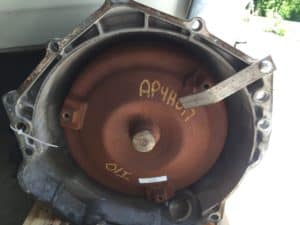Replacing a torque converter is relatively easy to do. Getting to the thing is an entirely different story. There are many reasons that you may wish to replace it. Maybe your transmission is slipping? This site is geared toward the performance crowd (well a little bit), so we are will cover stall speed and torque converter selection.
Determining Stall Speed
If you have a car or truck that is relatively stock, than you really don’t need to concern yourself to much with stall speed. Go down to the parts store and ask for the torque converter for your particular application. The factory put a lot of time into research and development to get the exact stall speed your drivetrain needs.
A vehicle with a stock drivetrain will have a moderate power band with plenty of power and torque at mid and low RPM’s. A car with an aggressive camshaft profile will have all of it’s power towards the very top of the tach. In order to make your automatic transmission work with this new engine setup, you’ll need to select a torque converter to match the camshaft.
If you’ve put some speed parts on that match ( and by that I mean cam, heads, rockers, and the proper compression ratio to go with it) you should do everything that you can to find something that matches.
Here is a great guide from Super Chevy on EXACTLY how to choose a torque converter for a high performance application:
http://www.superchevy.com/how-to/transmission/sucp-0207-torque-converter-selection/
How does a Torque Converter Work?
The whole concept behind a torque converter is to relieve you of the need for a clutch. The way that this is facilitated is the “stall speed”. Stall speed allows the engine to idle while barely applying any pressure to the rest of the drivetrain. You experience this all of the time. If you’ve ever driven a stick shift, it’s exactly like the feeling of just easing into the clutch while the car isn’t moving.
Where a manual vehicle utilizes a clutch, which is mechanical, a torque converter uses hydraulic pressure to engage the drivetrain. This is what allows for the elimination of the clutch pedal. The torque converter will move the vehicle once it reaches the proper engine speed.
Replacing a Torque Converter in a Rear Wheel Drive Vehicle

You’ll have a couple of options here. If you are really comfortable with the concept of pulling an engine, than you may wish to pull it. It’ll certainly end up taking longer than it would to get underneath the vehicle, but it’s something worth considering.
- You’ll need to separate the engine from the transmission. It’s usually easier to slide the transmission back than it is to pull the entire engine.
- First, pull the driveshaft off. Prepare to get puked on by the tail shaft. ATF doesn’t stain (that much) but it is very flammable so keep an eye on any light that you may have underneath the vehicle.
- Unclip the wiring harness, as well as any vehicle speed sensors that may be attached to the transmission.
- Make sure all of the cooling lines are removed. You’ll need to do this because when you pull the transmission back you could damage them even if they are willing to come with it.
- Unbolt the shift linkage.
- Inspect the transmission. Make sure there is nothing bolted to it that could cause the transmission not to pull back.
- Time to unbolt all of the bellhousing bolts.
- Unbolt the transmission from the crossmember. You may wish to reverse these two steps.
- Transmissions are several hundred pounds. Treat it with respect. Don’t get under there with a floor jack. Use a transmission jack. They are tough to keep on one and you can crush your head. That’s a heck of a way to go. Don’t get yourself killed.
- At this point you can drop the transmission.
- The converter slides out in most cases. Be gentle.
- Now put on the new converter and throw it all back together.

Comments are closed.